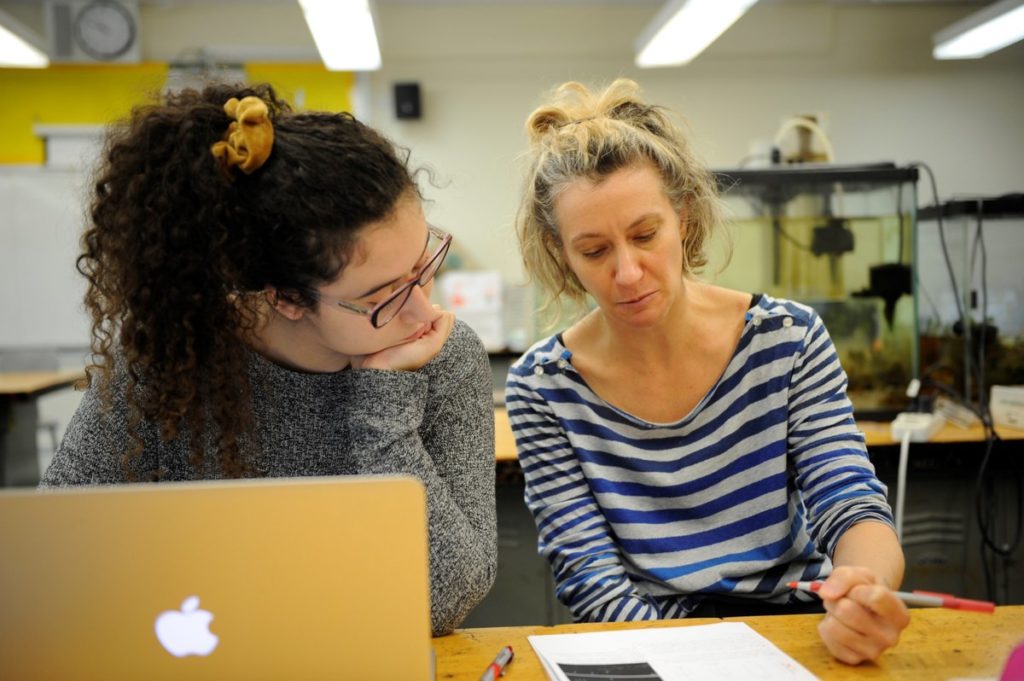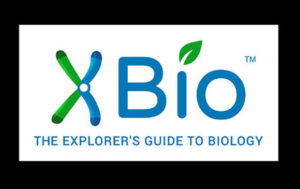Think back to your high school biology class. Whether it was a few years ago or a few decades ago, chances are it followed a pretty predictable schedule: slog through your textbook chapter by chapter and memorize a slew of terms and principles in each one. Now imagine a class where students tell their teacher what biological concept they’re excited to learn about and the group delves into a history of how scientists first discovered it and what they are trying to understand about it right now.
This type of class will debut in the fall at the Bronx High School of Science in New York City and, if it succeeds, will teach students that there are still many mysteries to solve. “Students read their textbook and they really think we know it all already,” says Tracy LaGrassa, a biology teacher who is creating the course.
It is a new and fun way to teach biology, but education experts say we need to make big changes to how science is taught in the United States, from elementary school all the way up to college. Exactly how to do that, and in particular how to spark interest in biomedical sciences, is the topic of this year’s Lasker Essay Contest, the winners of which will be announced in this July newsletter. If we do not improve things, the United States is “putting its future at risk by forfeiting its historical strengths in STEM [science, technology, engineering and math] education,” warned a 2012 report by the President’s Council of Advisors on Science and Technology (PCAST).

Tracy LaGrassa (right) meets with one of the biology students in the Bronx Science research program. LaGrassa says that talking with students in the research program about how their classes could help them better prepare for working in labs gave her the idea to create a new kind of student-led biology elective course. Credit: Jackson Trauben, Bronx Science Class of 2020
In the new Bronx Science class, LaGrassa thinks there will be no shortage of things students want to know about, and their inquiries will guide the class. The source of their burning questions could be something biology related they saw on TV, movies, or social media, or they could be based on observations of the world around them. Some of the students already work in research labs around New York City, as part of the Bronx Science biology research program, and may be grappling to understand a concept that is central to the experiments their lab is doing. For each topic, the class will read some of the original research articles, along with recent papers discussing the big unsolved mysteries in the field. LaGrassa wants to challenge the students to come up with ways to solve these mysteries and will explain how scientists often have to make sense of totally confounding data. Instead of exams, students will give short presentations about biological concepts.
LaGrassa’s course has a couple important things going for it. For one, it is an elective course, so she will not have to cram students with information for the standardized statewide test or Advanced Placement (AP) exams that will happen in other classes. For another, Bronx Science has some of the most motivated and well-prepared high schoolers in the country.
LaGrassa thinks there is no reason a similar biology elective would not work at any high school. Some teachers may be less comfortable teaching science that is not in a textbook, but there are workshops for middle and high school teachers on leading more-interactive science classes. Some students may not have experience in research labs, but LaGrassa says the class could do straightforward hands-on activities such as growing bacteria in a Petri dish and handling a pipette and other standard lab equipment. “The way you could do this anywhere is by letting kids play and mess around and see what happens,” LaGrassa says.
Interactive learning to stimulate interest in science
High school and college are critical times for keeping interest in science alive. “Kids in elementary school love science — they don’t get that much of it, but they are really excited about it. Something happens after that…when they start getting into more structured science classes,” says Ron Vale, professor of cellular and molecular pharmacology at the University of California, San Francisco (UCSF) and 2012 Lasker Basic Medical Research Laureate.
“We are killing a lot of interest in science [in high school and college], and I think biology is particularly egregious for this in terms of information to memorize,” says Vale, who founded iBiology, a project that produces free videos of biologists talking about themselves and their area of expertise. But because the videos cover pretty advanced material, they probably cater mostly to advanced college and even grad students who are already interested in biology, Vale says.

With Xbio, Ron Vale aims to bring a new voice to traditional biology textbooks.
Recently, Vale has been working on editing a “radically new” college biology textbook in which famous biologists share stories and personal views about research. “Hopefully you can really tell the personalities of the different authors so it’s not a homogenous voice like in a textbook,” Vale says. He plans to work with a pilot group of college educators to test and revise the first version.
“We know a lot about what works in education, but we don’t use it enough,” says Bruce Alberts, professor emeritus of biochemistry and biophysics at UCSF and recipient of the 2016 Lasker~Koshland Special Achievement Award in Medical Science. Memorizing biology vocabulary does not get students excited or even really help them learn, but what is effective, whether in middle school or in college, is for students to work in groups and struggle through a problem, says Alberts, who was president of the National Academy of Science (NAS) from 1993 to 2005 and dedicated his tenure to transforming science education in the United States.
Even large college lecture classes can incorporate active learning, for example by regularly stopping the lecture to have students discuss a question with their neighbors. In 2015, the NAS published a report for college professors called “Reaching Students,” which summarized research findings on science education. “We are making some progress. I think we are up to 20% of college introductory science classes that have active learning in them,” Alberts says.
Improving college science education is not only important because it will keep science interest alive for college students but because it is the “rate-limiting step” for all science education, Alberts says. “Before we can dramatically change the way we teach lower science, the people who will be teaching science and who will be parents have to have a different view of what science education should be, and that can only come from their own course in science.”
Building excitement in underserved communities

A MSM staff member mentors a student at TAG Academy.
For the last couple decades, the Morehouse School of Medicine (MSM) in Atlanta has opened up its research labs to students from Booker T. Washington High School and other high schools in metropolitan Atlanta who want lab experience, as part of their goal of making biomedical sciences more diverse. But it seemed that by the time they reached high school, many students had already formed opinions about science. So about five years ago, MSM reached out to a much younger group: in partnership with the Tuskegee Airmen Global Academy, MSM faculty, staff, and graduate students began helping fourth through eighth graders with schoolwork, including science, and giving them a scientist to talk with, in one-on-one weekly meetings.
“You really have to start much earlier than high school to truly get children interested in science,” says Sandra Harris-Hooker, vice president and executive vice dean for research and academic administration at MSM. The children at their partner elementary school, many of whom are from low-income families, struggle in reading and other basic subjects. In the past, even if they were excited about science and lucky enough to have engaging science classes as they progressed through school, their poor reading ability might have held them back. Now, MSM will be following the students through middle school and high school and eventually offering them opportunities to do lab research.
It is too soon to tell whether the MSM–elementary school partnership will help put kids on a science track through high school and college, but for the time being, “we certainly have ignited their interest,” Harris-Hooker says. As part of the program, the young students visit the campus of MSM, don white coats, and look at organs, just as if they were first-year medical students. “We are instilling in them the possibility [to go to med school or become a scientist], even if you didn’t come from a household where both of your parents are college graduates,” Harris-Hooker says.
By Carina Storrs
